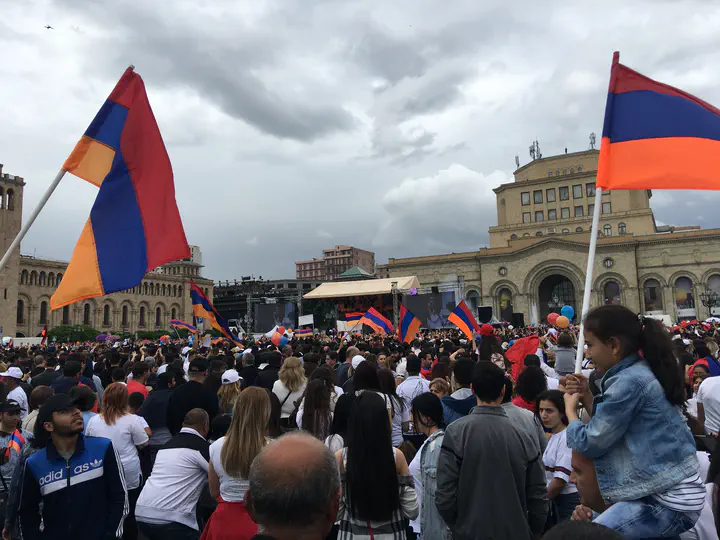 Image credit: Pandukht via Wikimedia Commons
Image credit: Pandukht via Wikimedia CommonsAbstract
On 17 April, the Armenian parliament elected long-time former President Serzh Sargsyan as Armenia’s Prime Minister. Protests against his election had been small and sparsely attended. A lack of faith in Sargsyan’s political alternative and remembrance of a violent crackdown on protesters ten years previously when Sargsyan first came into office held the opposition in check. The prime minister seemed well-placed to continue his tight grip on Armenian politics indefinitely. Yet less than a week later Sargsyan was gone. A mere two weeks after that a majority of Sargsyan’s own party members voted opposition leader Nikol Pashinyan, thrust into the office on the wave of a ‘Velvet Revolution,’ into power as his replacement. In this chapter, I draw upon one of the revolution’s most distinctive features – nonviolent resistance as its primary tactical repertoire – to help explain its trajectory and long-term prospects. Nonviolent revolutions are almost always unexpected, even shocking. Even those who end up leading them rarely anticipate their trajectories. Yet by tracing the common threads from Republic Square in Yerevan through the Euromaidan in Kiev to Wenceslas Square in Prague and the fall of the Berlin Wall, a growing literature on nonviolent resistance can give insight into the causes and consequences of these transformative events. What can we learn about Armenia’s Velvet Revolution from the growing literature on nonviolent resistance? I examine two topics: the factors that helped the revolution succeed and what we may expect in the future.